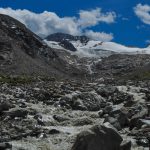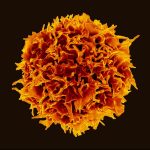
Hunting Venus 2.0: scientists sharpen their sights on new planet

Compiling all known information about planets like Venus beyond our solar system, scientists are closing in on finding an analogue of Earth’s ‘twin’
The study narrows James Webb Space Telescope (JWST) targets and if they succeed in locating a ‘new Venus’, it could reveal valuable insights into Earth’s future, and our risk of developing a runaway greenhouse climate as our Venus did.
The scientists who wrote the paper began with more than 300 known terrestrial planets orbiting other stars, called exoplanets. They whittled the list down to the five most likely to resemble Venus in terms of their radii, masses, densities, the shapes of their orbits, and perhaps most significantly, distances from their stars.
The paper also ranked the most Venus-like planets in terms of the brightness of the stars they orbit, which increases the likelihood that the JWST would get more informative signals regarding the composition of their atmospheres.
Today’s Venus floats in a nest of sulfuric acid clouds, has no water, and features surface temperatures of up to 900°F – hot enough to melt lead. Using the JWST to observe these possible Venus analogues, or ‘exoVenuses’, scientists hope to learn if things were ever different for our Venus.
Lead study author Colby Ostberg, a PhD student at the University of California Riverside, said: “One thing we wonder is if Venus could once have been habitable. To confirm this, we want to look at the coolest of the planets in the outer edge of the Venus zone, where they get less energy from their stars.”
See also: The planet that could end life on Earth

Venus Zone
The Venus Zone is a concept proposed by UCR astrophysicist Stephen Kane in 2014. It is similar to the concept of a habitable zone, which is a region around a star where liquid surface water could exist.
Ostberg said: “The Venus Zone is where it would be too hot to have water, but not hot enough that the planet’s atmosphere gets stripped away. We want to find planets that still have significant atmospheres.”
Finding a planet similar to Venus in terms of planet mass is also important because mass affects how long a planet is able to maintain an active interior, with the movement of rocky plates across its outer shell known as plate tectonics.
Ostberg added: “Venus has 20% less mass than Earth and, as a result, scientists believe there may not be any tectonic activity there. Therefore, Venus has a hard time taking carbon out of its atmosphere. The planet just can’t get rid of it.”
Another aspect of an active planet interior is volcanic activity, and evidence recently uncovered suggests Venus still has active volcanoes.
Kane, a co-author on the paper, said: “The large number of Venus analogues identified in our paper will allow us to test if such volcanic activity is the norm amongst similar planets, or not.”
The presence of life
The research team is proposing the planets identified in the paper as targets for the JWST in 2024. Webb is the most expensive and advanced observation tool ever created and will enable scientists not only to see whether the exoVenuses have atmospheres, but also what they’re made of.
The JWST observations may reveal biosignature gases in the atmosphere of an exoVenus, such as methane, methyl bromide or nitrous oxide, which could signal the presence of life.
Ostberg said: “Detecting those molecules on an exoVenus would show that habitable worlds can exist in the Venus Zone and strengthen the possibility of a temperate period in Venus’ past.”
These observations will be complemented by NASA’s two upcoming missions to Venus, in which Kane will play an active role. The DAVINCI mission will also measure gases in the Venusian atmosphere, while the VERITAS mission will enable 3D reconstructions of the landscape.
All of these observations are leading toward the ultimate question that Kane poses in much of his work, which attempts to understand the Earth-Venus divergence in climate: ‘Is Earth weird or is Venus the weird one?’
He said: “It could be that one or the other evolved in an unusual way, but it’s hard to answer that when we only have two planets to analyse in our solar system, Venus and Earth. The exoplanet explorations will give us the statistical power to explain the differences we see.”
If the planets on the new list turn out to indeed be much like Venus, that would show the outcome of Venus’ evolution is common.
Kane added: “That would be a warning for us here on Earth because the danger is real. We need to understand what happened there to make sure it doesn’t happen here.”
The research is published in The Astronomical Journal.
Image 1: Maat Mons is a massive shield volcano on the planet Venus and the planet’s second-highest mountain and highest volcano. © NASA/ JPL. Public domain.
Image 2: The divergent evolutionary pathways of Earth and Venus after formation. © O’Rourke, JG, Wilson, CF, Borrelli, ME et al. Public domain.














